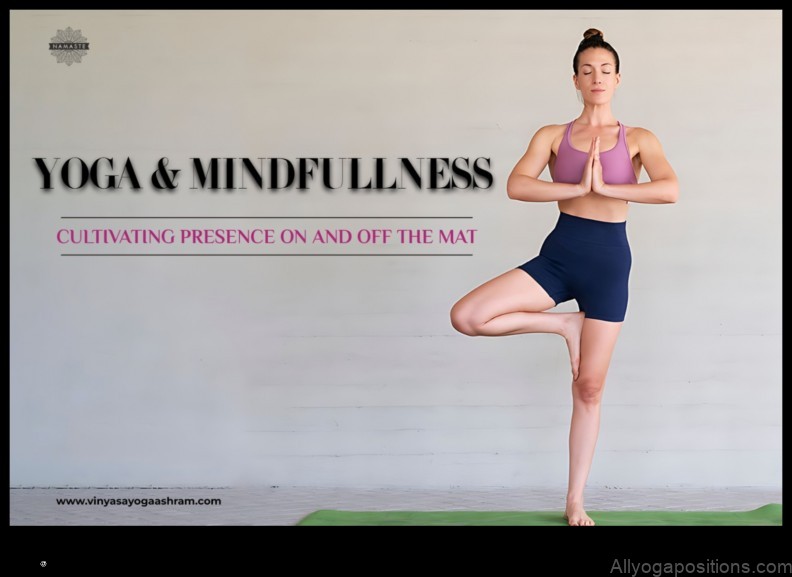
Yoga for Emotional Wellness: Cultivating Mindfulness
Yoga is a mind-body practice that has been shown to have many benefits for physical and mental health. In particular, yoga can be helpful for improving emotional wellness.
This article will discuss the benefits of yoga for emotional wellness, how to practice yoga for emotional wellness, and some specific yoga poses and breathing exercises that can help to improve mood and reduce stress.
Benefits of Yoga for Emotional Wellness
Yoga has been shown to have a number of benefits for emotional wellness, including:
- Reduced stress
- Improved mood
- Increased relaxation
- Enhanced self-awareness
- Improved sleep
- Reduced pain
How to Practice Yoga for Emotional Wellness
There are many different ways to practice yoga for emotional wellness. The best way to find a yoga practice that is right for you is to experiment with different styles and teachers until you find one that you enjoy and that helps you to feel better.
Some general tips for practicing yoga for emotional wellness include:
- Start slowly and gradually increase the intensity of your practice as you feel comfortable.
- Listen to your body and stop if you feel pain or discomfort.
- Focus on your breath and allow yourself to relax into the poses.
- Be patient and allow yourself to experience the benefits of yoga over time.
Yoga Poses and Breathing Exercises for Emotional Wellness
There are many different yoga poses and breathing exercises that can help to improve emotional wellness. Some of the most beneficial poses for emotional wellness include:
- Child’s pose
- Downward-facing dog
- Bridge pose
- Seated forward bend
- Shavasana (corpse pose)
Some of the most beneficial breathing exercises for emotional wellness include:
- Ujjayi breath
- Bhramari breath
- Sitkari breath
- Kapalbhati breath
- Nauli kriya
FAQ
Q: What is the difference between yoga and mindfulness?
Yoga and mindfulness are two different practices that can both be helpful for emotional wellness. Yoga is a physical practice that involves poses, breathing exercises, and meditation. Mindfulness is a mental practice that involves paying attention to the present moment without judgment.
Yoga can help to improve emotional wellness by reducing stress, improving mood, and increasing relaxation. Mindfulness can help to improve emotional wellness by reducing anxiety, improving focus, and increasing self-awareness.
Q: How can I use yoga to improve my emotional wellness?
There are many ways to use yoga to improve your emotional wellness. You can practice yoga at home, in a studio, or with a teacher. You can also try different types of yoga, such as hatha yoga, vinyasa yoga, or yin yoga.
It is important to find a yoga practice that you enjoy and that helps you to feel better. Some general tips for using yoga to improve your emotional wellness include:
- Start slowly and gradually increase the intensity of your practice as you feel comfortable.
- Listen to your body and stop if you feel pain or discomfort.
- Focus on your breath and allow yourself to relax into the poses.
- Be patient and allow yourself to experience the benefits of yoga over time.
Q: What are the benefits of yoga for emotional wellness?

II. What is Yoga?
Yoga is a mind-body practice that originated in ancient India. It combines physical postures, breathing exercises, and meditation to promote physical and mental well-being.
Yoga is often practiced in a group setting, but it can also be done at home. There are many different types of yoga, each with its own unique benefits. Some of the most popular types of yoga include hatha yoga, vinyasa yoga, and yin yoga.
Yoga can help to improve a variety of physical and mental health conditions, including stress, anxiety, depression, chronic pain, and insomnia. It can also help to improve flexibility, balance, and strength.
If you are interested in learning more about yoga, there are many resources available online and in your local community. You can also find a qualified yoga instructor to help you get started.
III. Benefits of Yoga for Emotional Wellness
Yoga has been shown to have a number of benefits for emotional wellness, including:
- Reduced stress
- Improved mood
- Increased self-awareness
- Enhanced relaxation
- Improved sleep
- Reduced pain
- Improved cognitive function
- Increased social connection
Yoga can help to improve emotional wellness by providing a number of benefits, including:
- Physical exercise: Yoga is a form of exercise that can help to improve physical health, which can in turn improve mental health.
- Mindfulness: Yoga encourages mindfulness, which is the practice of paying attention to the present moment without judgment. Mindfulness can help to reduce stress, improve mood, and increase self-awareness.
- Social connection: Yoga can be a social activity, which can help to improve social connection and reduce loneliness.
If you are interested in learning more about the benefits of yoga for emotional wellness, there are a number of resources available online and in libraries. You can also talk to your doctor or a mental health professional about whether yoga may be a good option for you.

IV. How to Practice Yoga for Emotional Wellness
Yoga is a mind-body practice that can help you to improve your physical and emotional well-being. When you practice yoga, you are not only stretching and strengthening your body, but you are also calming your mind and reducing stress. Yoga can help you to manage your emotions, improve your mood, and increase your sense of well-being.
There are many different ways to practice yoga, and there are many different styles of yoga to choose from. You can find a style of yoga that is right for you and that you enjoy practicing.
When you are first starting out, it is important to find a qualified yoga instructor who can teach you the basics of yoga and help you to get started. You can find yoga classes at your local gym, yoga studio, or community center. You can also find yoga classes online.
Once you have learned the basics of yoga, you can start practicing yoga at home. You can find many different yoga resources online, including books, DVDs, and online classes.
Here are some tips for practicing yoga for emotional wellness:
- Start slowly and gradually increase the length of your practice over time.
- Listen to your body and don’t push yourself too hard.
- Find a comfortable space to practice yoga where you will not be disturbed.
- Wear comfortable clothing that you can move around in easily.
- Turn off your phone and other electronic devices so that you can focus on your practice.
Yoga is a great way to improve your physical and emotional well-being. When you practice yoga, you are not only stretching and strengthening your body, but you are also calming your mind and reducing stress. Yoga can help you to manage your emotions, improve your mood, and increase your sense of well-being.
V. Mindfulness and Yoga
Mindfulness is a state of being present in the moment, without judgment. It is a practice that can help us to reduce stress, anxiety, and depression, and to improve our overall mental health. Yoga is a mind-body practice that can help us to connect with our bodies and minds, and to cultivate mindfulness. When we practice yoga and mindfulness together, we can experience a deep sense of relaxation and well-being.
There are many ways to incorporate mindfulness into your yoga practice. One way is to simply focus on your breath as you move through the poses. Another way is to bring your attention to the sensations in your body as you practice. You can also try to notice your thoughts and feelings without judgment, and to let them go as they arise.
Mindfulness and yoga can be a powerful combination for improving your emotional wellness. By practicing mindfulness, you can learn to live in the present moment, and to let go of stress, anxiety, and depression. By practicing yoga, you can connect with your body and mind, and cultivate a sense of peace and well-being.
6. FAQ
* What is yoga for emotional wellness?
* Mindfulness and yoga
* Yoga poses for emotional wellness
* Yoga breathing exercises for emotional wellness
* Yoga meditation for emotional wellness
* Yoga nidra for emotional wellness
* FAQ
VII. Yoga Breathing Exercises for Emotional Wellness
Yoga breathing exercises, also known as pranayama, can help to improve emotional wellness by reducing stress, anxiety, and depression. These exercises can also help to improve focus and concentration, and to promote relaxation.
There are many different yoga breathing exercises that you can practice. Some of the most common include:
- Ujjayi breath. This is a deep, diaphragmatic breathing exercise that is often used in yoga. It is said to help to calm the mind and body, and to promote relaxation.
- Breath of fire. This is a vigorous breathing exercise that is said to help to energize the body and mind. It is often used to improve focus and concentration.
- Kapalbhati breath. This is a cleansing breathing exercise that is said to help to detoxify the body and mind. It is often used to improve digestion and promote relaxation.
You can practice yoga breathing exercises at any time of day, but they are particularly beneficial to practice in the morning or evening. To practice yoga breathing exercises, follow these steps:
- Sit in a comfortable seated position.
- Close your eyes and relax your body.
- Breathe in through your nose and out through your mouth.
- Focus on your breath and the sensations in your body.
- Continue to breathe deeply and slowly for 5-10 minutes.
Yoga breathing exercises are a simple and effective way to improve emotional wellness. By practicing these exercises regularly, you can reduce stress, anxiety, and depression, and improve your overall mental health.
Yoga Meditation for Emotional Wellness
Yoga meditation is a type of meditation that is practiced while doing yoga poses. It is a powerful way to reduce stress, anxiety, and depression, and to improve your overall mental health.
Yoga meditation can be done at any time of day, but it is best to practice it when you are feeling stressed or anxious. To begin, find a comfortable place to sit or lie down. Close your eyes and take a few deep breaths. Then, start to focus on your breath. As you breathe in, say to yourself, “I am breathing in.” As you breathe out, say to yourself, “I am breathing out.” Continue to do this for a few minutes, until you feel relaxed and focused.
Once you are relaxed and focused, you can begin to do yoga poses. Start with simple poses, such as the child’s pose or the seated forward bend. As you do each pose, focus on your breath and on the sensations in your body. Allow yourself to relax and let go of any tension.
Yoga meditation can be a very powerful way to improve your emotional wellness. It can help you to reduce stress, anxiety, and depression, and to improve your overall mental health. If you are feeling stressed or anxious, try practicing yoga meditation. You may be surprised at how much it can help you.
IX. Yoga Nidra for Emotional Wellness
Yoga Nidra is a deep relaxation practice that can help to improve emotional wellness. It involves lying in a comfortable position and allowing your mind to wander while focusing on your breath. Yoga Nidra can help to reduce stress, anxiety, and depression, and it can also improve sleep quality.
To practice Yoga Nidra, find a comfortable place to lie down. You can lie on your back, your side, or your stomach. Close your eyes and relax your body. Begin to focus on your breath. Notice the feeling of your breath as it enters and leaves your body.
As you focus on your breath, allow your mind to wander. Let your thoughts come and go without judgment. If you find yourself getting caught up in a thought, simply bring your attention back to your breath.
Continue to practice Yoga Nidra for 10-20 minutes. When you are finished, take a few deep breaths and slowly open your eyes.
Yoga Nidra is a safe and effective way to improve emotional wellness. It is a gentle practice that can be done by people of all ages and abilities. If you are interested in learning more about Yoga Nidra, there are many resources available online and in libraries.
X. FAQ
Q: What is yoga?
A: Yoga is a mind-body practice that combines physical postures, breathing exercises, and meditation. It is designed to promote physical and mental well-being.
Q: What are the benefits of yoga for emotional wellness?
A: Yoga can help to reduce stress, anxiety, and depression. It can also improve mood, sleep, and self-esteem.
Q: How can I practice yoga for emotional wellness?
A: There are many different ways to practice yoga for emotional wellness. You can start by finding a yoga class that is appropriate for your level of experience. You can also practice yoga at home by following a video or app.
Table of Contents
